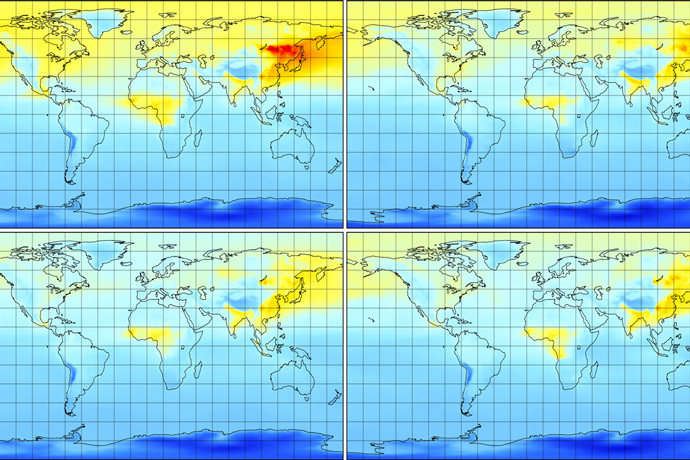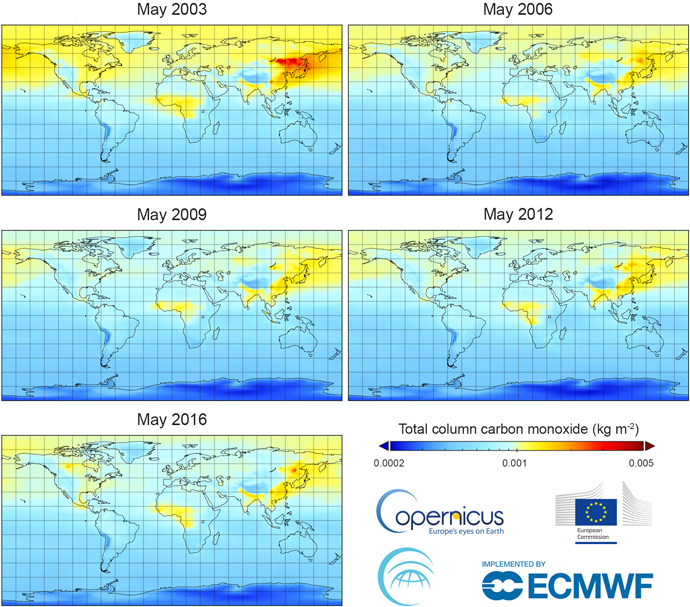

The Copernicus Atmosphere Monitoring Service (CAMS), implemented by ECMWF on behalf of the European Commission, has released its new global reanalysis of atmospheric composition for the period 2003–2016.
Reanalysis combines observations from past and current Earth system observing systems with state-of-the-art computer models. The CAMS reanalysis relies on satellite observations. These often have gaps where instruments have failed or clouds have obscured the view, for instance, and inconsistencies may occur because of a difference in resolution between instruments. The goal of reanalysis is to create a consistent dataset covering a certain period of time.
The new CAMS reanalysis provides consistent information on aerosols and reactive gases using a fully integrated atmospheric composition modelling system based on ECMWF’s Integrated Forecasting System (IFS). It follows in the footsteps of the earlier MACC reanalysis and CAMS interim reanalysis.
Upgrades compared to the previous datasets include a better global horizontal resolution of approximately 80 km, a refined temporal resolution of 3 hours, and the availability of more chemical species. The new reanalysis also uses additional satellite datasets and a more recent, improved version of the IFS.

CAMS global reanalysis for carbon monoxide averaged over the month of May for five different years between 2003 and 2016. (Image: Copernicus Atmosphere Monitoring Service, ECMWF)
Richard Engelen, Deputy Head of CAMS, says: “The new CAMS reanalysis provides a much-improved dataset supporting our users in their endeavour to study the atmosphere or develop their applications.”
CAMS reanalysis data serve a multitude of users from application developers to scientists and policymakers. Scientists can use reanalysis data to analyse the state of the atmosphere and look at trends that have developed over recent years or decades.
It is also possible to use reanalysis to interpret certain events by looking at the ‘bigger picture’. For instance, if there are an unusual number of wildfires in a particular region, this may affect air quality. To properly analyse the effect of the fires, it is necessary to be able to compare the new data with historical data.
“Reanalysis makes such comparisons possible as it provides information for the affected year and region but it also gives the data for ‘normal’ years,” Dr Engelen says.
Before releasing this new dataset, CAMS carefully assessed its quality. The results are documented in a comprehensive report. Information on how to access the freely available reanalysis data can be found on the ECMWF Copernicus Knowledge Base page, which also provides access to detailed documentation. The reanalysis will be kept up to date with new observations as they become available.
For further information, please contact the CAMS User Support team at copernicus-support@ecmwf.int.
